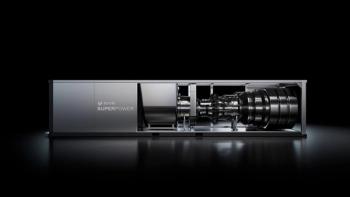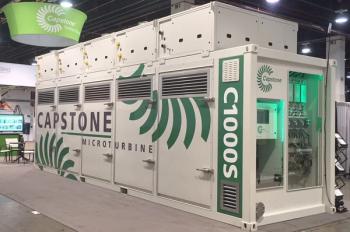
- November/December 2021
Vendor Spotlight: Solar Turbines
Hydrogen is top of mind at Solar Turbines, a mainstay of the turbomachinery industry for decades.
Solar Turbines, a Caterpillar Company, has been a mainstay of the turbomachinery landscape for many decades. It offers a wide range of products including centrifugal gas compressors and packages, mechanical drive packages, and gas turbines for oil & gas and power generation.
It offers a series of gas turbine lines such as the Titan, Taurus, Mars, Mercury, Centaur, and Saturn. These range from 1 to 23 MW. Solar dominates the market for small gas turbines.
HYDROGEN
Solar Turbines has been providing solutions for Hydrogen (H2) rich fuels since 1985. It has logged over two million hours of operation, some units today using as much as 80% H2 content.
H2 in gas turbine operation enables carbon reduction opportunities across a broad range of applications and industries. This will become increasingly more important as renewable penetration rises and gas turbines are needed to provide stable baseload and renewable support.
“Increased global usage of H2 is needed to meet increasing energy demands from customers as well as carbon reduction targets set by companies and countries,” said Wade Willden, a spokesperson for Solar Turbines. “Solar is committed to continue increasing our H2 capabilities and investing in H2 technology, offering energy solutions that are clean, safe and reliable.”
Within pipeline gas applications, H2 will displace some portion of the natural gas in the pipeline. It is expected that the H2 content of the gas will not exceed 20% in the near future. But within the industrial process market, H2 content is already greater than 20% and as high as 100%. This market may include fuel gas with significant levels of other gases than methane, leading to careful consideration of safety, especially for high carbon monoxide. The best candidate today for this market and fuel type is a conventional combustion system.
SOLAR'S H2 TECHNOLOGY EXPERIENCE
Solar has extensive experience in high H2 technology. It has 46 generator set packages operating currently with nearly two million hours of accumulated experience and up to 65% H2. Of further note is a propane dehydrogenation application in Belgium that can operate with up to 83% H2. The company also has H2 experience in refineries with over 40,000 hours and up to 37% H2 in a conventional combustion system.
Solar’s SoLoNOx dry low emissions combustion system can use fuel with H2 content of up to 20%. Examples include refineries in the United States and chemical plant applications in both China and Europe.
Solar’s gas turbines, packages, and compressors are available for H2 fuel blends for both conventional and SoLoNOx combustion. The company is committed to supporting the industry with a development program leading to 100% capability on SoLoNOx by 2030 or earlier.
It should be understood that the percentage of H2 blended with natural gas can have an impact on the gas turbine’s emissions signature. For conventional combustion, the impact on NOx emission varies by the percent of H2 and the presence of other fuel constituents. It must be be determined on a project-by-project basis. For SoLoNOx combustion systems at the 15 ppm NOx (and higher) warranty level, H2 concentrations up to 20% should not impact the emissions warranty.
CUSTOMER SERVICE
Solar Turbines provides support for customers to ensure success with package upgrades, controls retrofits, and engine and compressor modifications for hydrogen-blend operation. In addition, Solar’s Fleet Assessment Services (FAS) provide a consultative assessment and recommendation for hydrogen blend and carbon reduction fleet opportunities and asset optimization.
Articles in this issue
almost 4 years ago
Chemical cleaningalmost 4 years ago
Power recovery train controlsalmost 4 years ago
Turbine Sensorsalmost 4 years ago
Dry gas sealsalmost 4 years ago
Centrifugal compressors in Oil & Gasabout 4 years ago
Turbo Tips: Tackling real-world challengesabout 4 years ago
Myth: Carbon dioxide is always pumpedabout 4 years ago
Turbo Tour: Elliott Group’s Cryogenic Pump Test FacilityNewsletter
Power your knowledge with the latest in turbine technology, engineering advances, and energy solutions—subscribe to Turbomachinery International today.




